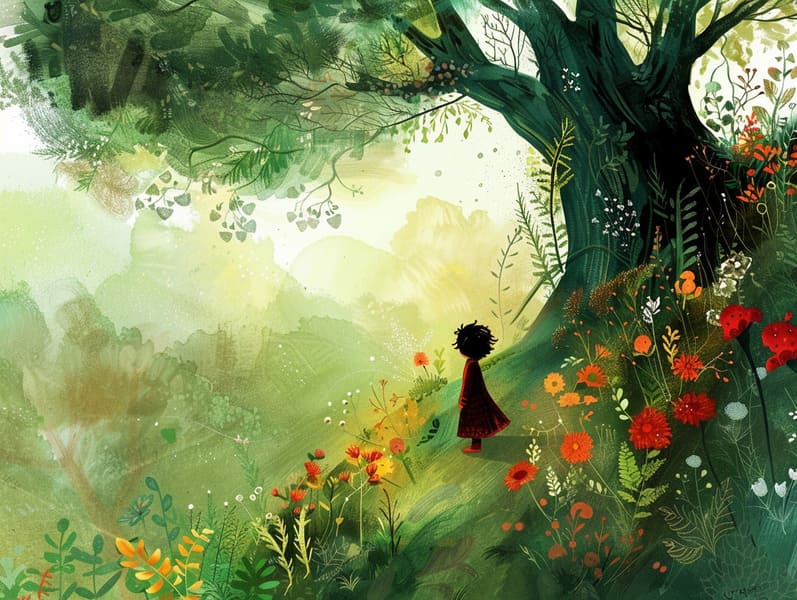Exploring the Roots of Traditional Fairy Tales and Its Ageless Appeal.
Exploring the Roots of Traditional Fairy Tales and Its Ageless Appeal.
Blog Article

Popular fairy tales have enduring presence. These tales have been conveyed from one generation to the next long before they were ever written down. They developed from a variety of civilizations, including Middle Eastern traditions. They were initially transmitted among mature audiences, often carrying themes and messages reflective of the societal norms and beliefs of the time.
The renowned Brothers Grimm, Jacob and Wilhelm (the Grimm brothers), were among the first to assemble many of these beloved fairy tales. Their published works, "Grimm's Folk Tales," included narratives like "The Little Glass Slipper," "The Bread Crumb Trail," and "The True Story of Snow White," which have since become classics in the world of beloved fairy tales. Similarly, Andersen's enchanting stories, such as "The Mermaid's Tale," and "The Ugly Duckling," have touched hearts worldwide, establishing their place in the pantheon of iconic fairy tales.
Though they are centuries old, classic fairy tales remain as meaningful as ever, especially as kids' bedtime tales. These magical stories are now available in many formats, including artistically illustrated books, charming animations, and digital storybooks.
Their lasting presence can be traced to several whimsical characteristics:
Moral Lessons: Classic fairy tales often convey important moral lessons. Narratives like "The Boy Who Cried Wolf" teach the value of being truthful, while "The Race of the Tortoise and the Hare" illustrate the traits of tenacity and modesty. These stories offer the young clear distinctions between good and bad, guiding their moral compass in a kind yet lasting way.
Empathy and Understanding: Timeless fairy tales frequently portray figures facing difficulties and adversities, urging readers to feel with their struggles and support their triumphs. For instance, "Beauty and the Beast" illustrates the benefit of seeing beyond the surface to appreciate the inner being of a character, advancing warmth and appreciation.
Cultural Perception: Many fairy tales are infused with the cultural contexts from which they developed. Learning from these narratives can provide illuminating insights into different societies, building a sense of global appreciation and recognition.
Inventiveness and Fantasy: The magical elements in old fairy tales—talking beasts—fuel children’s creativity. These tales lead readers to mythical realms, invigorating innovative thinking and a sense of magic that continues a lifetime.
Ancient fairy tales are not only fascinating but also instructive. They act as fascinating tools in strengthening various cognitive and affective skills in children. When fairy tales are narrated, they develop language development by introducing new language items and sophisticated sentence structures. This practice also enhances auditory perception and concentration, as kids remain attentive, eager to see what happens next.
Furthermore, exploring the themes and characters of timeless fairy tales can foster problem-solving abilities and thinking skills. Children are taught to discern patterns, anticipate outcomes, and figure out cause and effect. These reflections also contribute to kids verbalize their thoughts and feelings, adding to their emotional intelligence.
In today’s modern era, the prevalence of digital fairy tales has made these tales more accessible than ever. Web-based platforms and software provide ample collections of famous fairy tales that can be explored or listened on anytime, anywhere. Fairy tales recited are particularly common, giving an delightful method for little ones to immerse in these magical stories. Audio stories and narrated videos take characters and settings to life, often accompanied by enchanting music and instrumentals that augment website the storytelling journey.
The unending appeal of timeless fairy tales lies in their ability to adapt to today's world while staying true to their fundamental ideas. Contemporary reimaginings of these stories often showcase more inclusive protagonists and modern settings, making them relevant to today’s audience. However, the key lessons of daring, goodness, and rightness remain unchanged, continuing to move children of all ages.
Classic fairy tales also offer a sense of assurance and knownness. They supply a structured narrative with a straightforward beginning, middle, and end, often finishing with the closure of conflicts and the triumph of morality over immorality. This certainty can be relieving for the young, granting a sense of consistency in an shifting world.
Old fairy tales continue to enthrall and guide new generations, maintaining their majesty and significance in modern society. As kids' bedtime tales, they disclose a perfect blend of delight and instruction, enriching moral values, empathy, and creativity. The abundance of online fairy tales and the widespread nature of fairy tales read aloud warrant that these traditional narratives remain attainable to new generations.
By retaining and divulging these fairy tales, we continue to cherish the rich tapestry of inventiveness and cultural heritage. Whether you are perusing a richly illustrated book, experiencing a online collection, or listening via an audio story, the charm of children's fairy tales is always within reach. These fairy tales convey of the invariable strength of narratives and its ability to bond us across time and space.
Be it you are browsing a gorgeously illustrated book, enjoying a online collection, or listening through an read-aloud book, the beauty of Grimm's fairy tales is always within reach.
These fairy tales point out of the eternal essence of tales and its ability to connect us across generations and cultures, establishing a link that charms and informs alike.